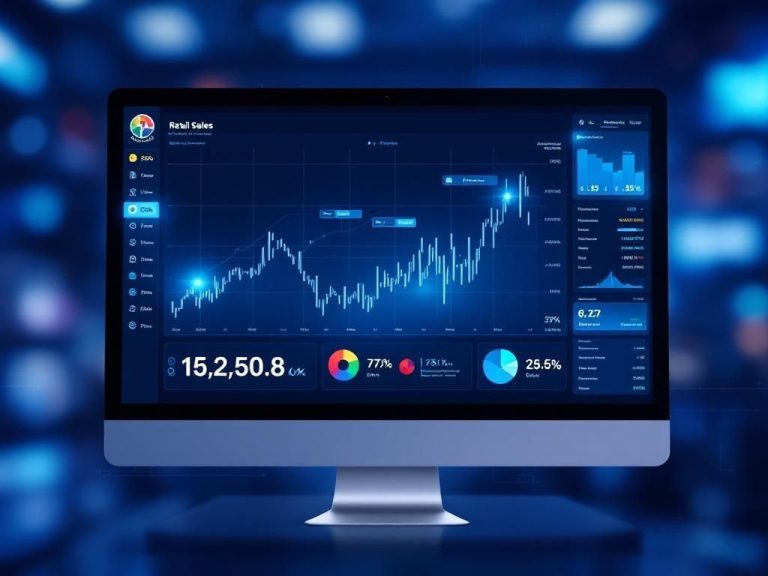In today’s rapidly evolving retail landscape, the ability to anticipate consumer behavior and market trends is crucial for success. Predictive analytics tools are empowering retailers to make data-driven decisions, optimizing inventory management, enhancing customer experiences, and ultimately driving sales. This article delves into the top predictive analytics tools available to retailers, highlighting their features, benefits, and how they can transform retail operations.
Understanding Predictive Analytics in Retail
Predictive analytics combines statistical algorithms and machine learning techniques to identify the likelihood of future outcomes based on historical data. In retail, this means analyzing customer behavior, market trends, and operational efficiency to forecast future sales and inventory needs.
Key Benefits of Predictive Analytics in Retail
- Improved Inventory Management: Reduces the risk of stockouts and overstock situations.
- Enhanced Customer Experiences: Allows for personalized marketing and recommendations.
- Increased Sales: Identifies emerging trends and customer preferences.
- Optimized Pricing Strategies: Adjusts pricing based on demand forecasts.
Top Predictive Analytics Tools for Retail
1. IBM Watson Analytics
IBM Watson Analytics is a powerful tool that uses AI to analyze data and generate actionable insights. Its user-friendly interface allows retailers to easily access predictive analytics capabilities without extensive technical knowledge.
Features:
- Natural Language Processing (NLP) for data querying.
- Visual data exploration tools.
- Automated data preparation.
2. Tableau
Tableau is a leading data visualization tool that enables retailers to create interactive and shareable dashboards. Its predictive analytics capabilities help in identifying trends, making forecasts, and sharing insights across teams.
Features:
- Drag-and-drop interface for easy dashboard creation.
- Integration with various data sources.
- Built-in forecasting tools.
3. Microsoft Azure Machine Learning
This cloud-based service provides a robust platform for building predictive models. Retailers can utilize Microsoft Azure Machine Learning to analyze large datasets and derive insights that inform strategic decisions.
Features:
- Scalable machine learning models.
- Collaboration features for teams.
- Integration with other Azure services.
4. SAS Predictive Analytics
SAS offers a comprehensive suite of analytics tools designed for retail. It provides advanced predictive modeling capabilities, helping retailers forecast customer behavior and optimize pricing strategies.
Features:
- Advanced analytics and statistical modeling.
- Data mining and predictive modeling.
- Real-time data processing.
5. RapidMiner
RapidMiner is a data science platform that allows retailers to create predictive models without extensive programming knowledge. Its intuitive interface and robust analytics capabilities make it a favorite among retail businesses.
Features:
- Extensive library of machine learning algorithms.
- Support for various data formats.
- Collaboration and extension capabilities.
Choosing the Right Predictive Analytics Tool
When selecting a predictive analytics tool, retailers should consider several factors to ensure they choose the best fit for their needs:
1. Ease of Use
The tool should have an intuitive interface that allows users with varying technical skills to navigate and use its features effectively.
2. Integration Capabilities
Compatibility with existing systems and data sources is essential for a seamless workflow.
3. Scalability
As retail operations grow, the tool should be able to scale accordingly to handle increased data and users.
4. Support and Training
Access to customer support and training resources can significantly impact the success of implementing a new tool.
Best Practices for Implementing Predictive Analytics
To successfully leverage predictive analytics, retailers should adhere to the following best practices:
- Define Clear Objectives: Determine specific goals such as increasing sales, reducing stockouts, or improving customer satisfaction.
- Invest in Data Quality: Ensure that the data being analyzed is accurate and relevant.
- Start Small: Begin with a pilot project to test the tool’s effectiveness before a full-scale implementation.
- Involve Stakeholders: Engage key stakeholders from various departments to ensure alignment and buy-in.
Case Studies: Success Stories in Retail Predictive Analytics
Case Study 1: Walmart
Walmart leverages predictive analytics to optimize inventory management and enhance customer experience. By analyzing purchasing patterns, they can ensure stock availability and timely replenishment.
Case Study 2: Target
Target uses predictive analytics for personalized marketing campaigns. By understanding customer preferences and purchase history, they can tailor promotions to individual customers, leading to increased sales.
Conclusion
Predictive analytics tools are revolutionizing the retail industry by providing insights that drive decision-making across various facets of operations. By harnessing the power of these tools, retailers can enhance customer experiences, streamline inventory management, and ultimately boost profitability. Investing in the right predictive analytics solution is a critical step towards achieving retail success in an increasingly competitive market.
FAQ
What are predictive analytics tools?
Predictive analytics tools are software applications that analyze historical data and use statistical algorithms to forecast future outcomes, helping businesses make informed decisions.
How can predictive analytics benefit retail businesses?
Predictive analytics can help retail businesses optimize inventory management, enhance customer experiences, improve marketing strategies, and increase sales by accurately forecasting trends and consumer behavior.
What are the top predictive analytics tools for retail?
Some of the top predictive analytics tools for retail include SAS Analytics, IBM SPSS, RapidMiner, Tableau, and Microsoft Azure Machine Learning.
How do I choose the right predictive analytics tool for my retail business?
When choosing a predictive analytics tool for retail, consider factors such as ease of use, integration capabilities, scalability, cost, and the specific features that align with your business needs.
Is it necessary to have a data science background to use predictive analytics tools?
While a data science background can be beneficial, many predictive analytics tools are designed with user-friendly interfaces, allowing business professionals to utilize them effectively without extensive technical expertise.
Can predictive analytics tools help with customer segmentation?
Yes, predictive analytics tools can analyze customer data to identify distinct segments, enabling retailers to tailor marketing efforts and improve customer engagement.




